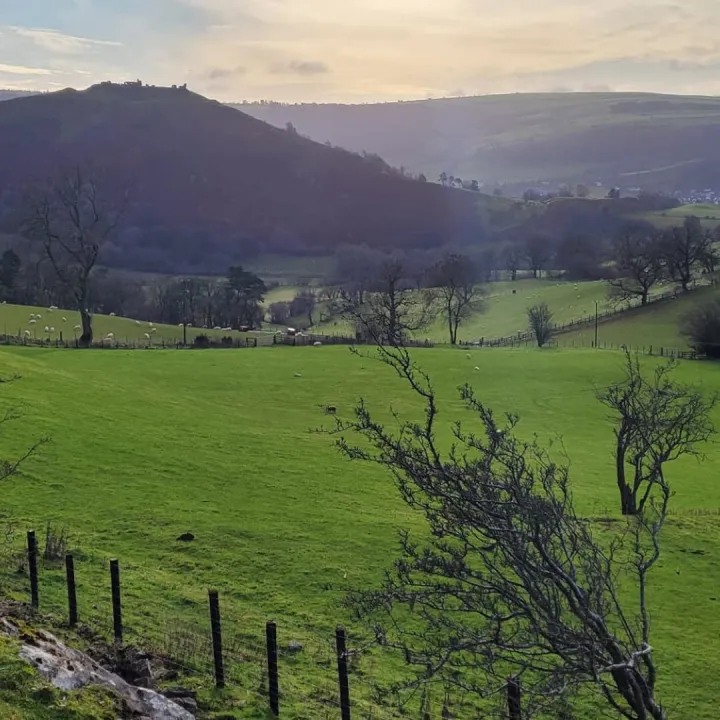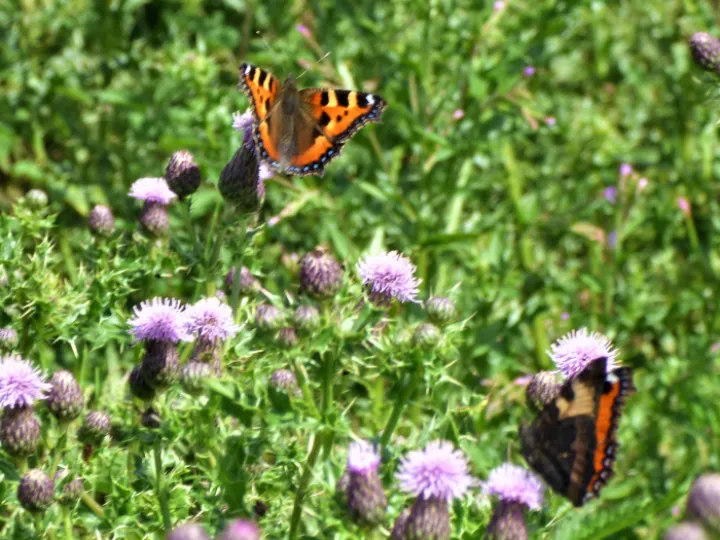







Days move on on Turnpike Fields and each week brings out new stars to perform. It is now the turn of some of nature's players often associated with a land north of the border. Yet as we will see that species is only one of several. I'm talking about Thistles. If you tuned into my last article you would have heard of the botanical family members of "Asteraceae" and here are so more cousins.
Spear Thistle
The type mostly commonly recognised is the Spear Thistle which is often regarded as the national emblem of Scotland. It, in fact, goes by 18 aliases including Scotch Thistle. When in full flower as it is now it is a show stopper with its brilliant purple head with a plume of feathery hairs. The other obvious feature is its spiky leaves giving a "Don't mess with me" look. Like other family members in some places it is regarded as "invasive" but in the wild places it is loved by bees and kindred flying creatures. Parts of it can actually by eaten and in Italy it is used in the making of cheese.
Creeping Thistle
The other kind of thistle present on the Fields is Creeping Thistle. It beats its cousin with 24 aliases with the weirdest probably "Lettuce from hell Thistle". It does not have a quite so showy head and is generally duller in colour. Additionally it has less vicious spikes although is can still feel uncomfortable on the skin. The root has been chewed as a remedy for toothache and and infusion of the plant for rheumatic joints. Both these thistles in there flowering stage are beloved by bees and other flying insects as will be seen on a sunny day.
Sowthistle
I mentioned the Sowthistle as a dandelion look-alike, but it should also be considered with the Thistle brethren. There are two types which can be seen on the Fields. The most obvious is Prickly Sowthistle with prickly leaves which imitate the more thistlely Thistles. Its other names include Blue sow-thistle, rough sowthistle, spiny sowthistle. There is reference to its fluffy seeds in one of Beatrice Potter's books, but I can't remember which one but I think Jeremy Fisher was involved..
Also the Smooth Sowthistle which as its name infers has less painful leaves this is also known by other names including common sowthistle, sow thistle, smooth sow thistle, annual sow thistle, hare's colwort, hare's thistle, milky tassel, milk thistle, soft thistle, or swinies.
Burdock
Belonging also to the same family is Burdock and a magnificent patch can be seen in the hedge as you go down the slope in the top field. It has slightly smaller thistle-like seed heads. Burdock is said to have countless medical benefits including as an aphrodisiac. I remember it being sold as a soft drink combined with Dandelion but it has been drunk as a light mead since the middle ages.
Wild Teasel
Finally I could not finish this Prickly Subject without mentioning the Wild Teasel. This tall and statuesque plant, is a favourite with flower arrangers because of its striking spiky head, purple when fresh and chocolate brown when dried. It often chooses waste ground to grow and is present on the spoil mound in the top field. Teasel is best known in the textile industry for its use in raising the nap of fabrics, and it also provides a blue dye. There are also numerous medicinal benefits. It is an important winter food source for Goldfinches.
Each week brings fresh delights on the Fields, so look out for the white puffy-headed Meadowsweet in the floating bog in the lower field and the yellow swaths of Common Birdsfoot Trefoil below the Mound in the top field. Don't forget to take in the grassland now turned from its purple haze to golden brown waves.
Enjoy!
Get In Touch
AudlemOnline is powered by our active community.
Please send us your news and views using the button below:
Email: editor@audlem.org





